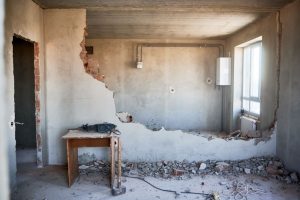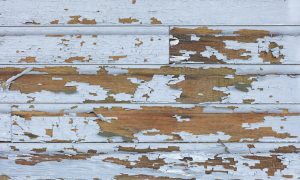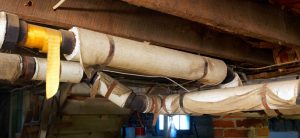Humans breathe in mold every day in minute amounts. Mold spores are much more prevalent in damp and dark places where mold is fruitful and multiplies when left undisturbed.
We’ll explain why mold is dangerous to public health and why remediation must happen before human occupation, either with an old commercial building or a business recovering from a fire.
Related Post: Mold Remediation FAQs
Where does mold grow most prominently in buildings?
Mold, a class of fungi, generally find porous substances to grow on, such as wood and paper, because it gives mold spores a place to take root with the natural grains and a food source. However, mold can grow anywhere, even on plastic and metal, if there is enough standing moisture.
Why does mold cause health problems?
Toxic mold, not all types of mold, produces mycotoxins. These toxins can build up in the lungs because mold spores move easily with the air (that’s how mold spreads). If someone is close enough to a large batch of mold, it can get into the lungs. The two most prominent types of mold that grow in structures are Stachybotrys and Aspergillus.
Over time, exposure to mycotoxins from mold can cause symptoms in people similar to an allergic reaction to pollen:
- Watery eyes
- Sneezing
- Itching
- Coughing
- Wheezing
- Difficult breathing
- Runny nose
- Headache
- Fatigue
Keep in mind this usually happens when there is a large amount of mold that’s visible.
How does mold grow?
Mold typically grows on organic surfaces because the spores need those substances to grow and procreate. They’ll destroy the organic material eventually as part of their natural feeding process. Mold spores prefer dark, damp places to grow.
How do professionals remediate mold?
Professionals remediate mold using a step-by-step process.
- A mold remediation company like Environmental Demolition Group starts by assessing the problem. Our team will go into a building, whether it’s old and abandoned or it just had a fire, and see what the situation is before taking steps for mold remediation.
- Then we develop an action plan from the first time our staff steps onto the property with equipment in hand to the day we certify that mold has been remediated. It also depends on how the moisture got there to cause mold to grow. Clean water causing mold growth is one thing. Sewage, chemicals, biological waste, or creek water offers other challenges to remediation personnel.
- Our team will cordon off any affected areas to prevent the spread of mold spores to other areas.
- For very large projects with greater than 100 square feet contaminated by mold, our team will use hazmat suits, gloves, goggles, and HEPA respirators to remove mold.
- Depending on how prevalent the mold is, we may use shovels and wheelbarrows to move the mold into bins that seal off the contaminants. We’ll generally throw away rotted wood, sheetrock, carpet, and non-load-bearing items contaminated with mold. Once there is less mold, we may use specialized vacuums to make the process faster.
- After all of the mold is removed, we may use professional-grade fungicides to kill any leftover spores that could be found on surfaces.
- Once we’re done, we remove our equipment and make our final reports on the areas we remediated and the items we threw away.
Related Post: Why Our Experienced Staff Makes Us a Top Select Demolition Company for Cincinnati
Talk Mold Remediation in Cincinnati
Mold can be a severe issue in old buildings and buildings that had a fire. You need a professional team to help take care of any mold growing on your commercial property.
Contact Environmental Demolition Group or call 859-363-4863 to learn more about mold remediation in Cincinnati and Northern Kentucky.





